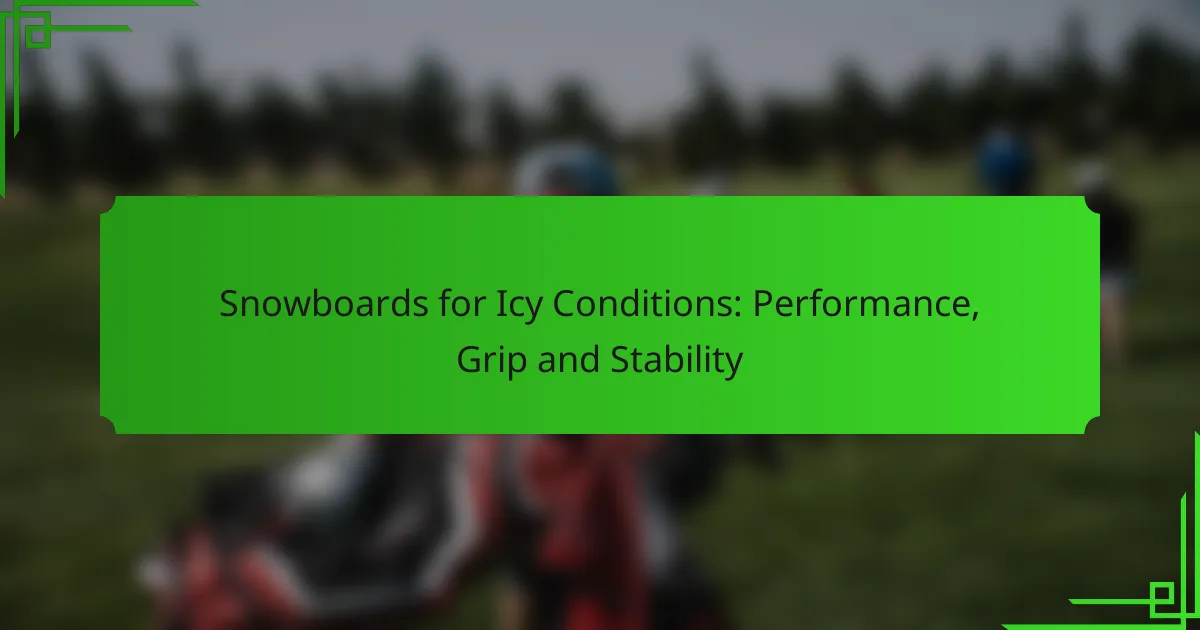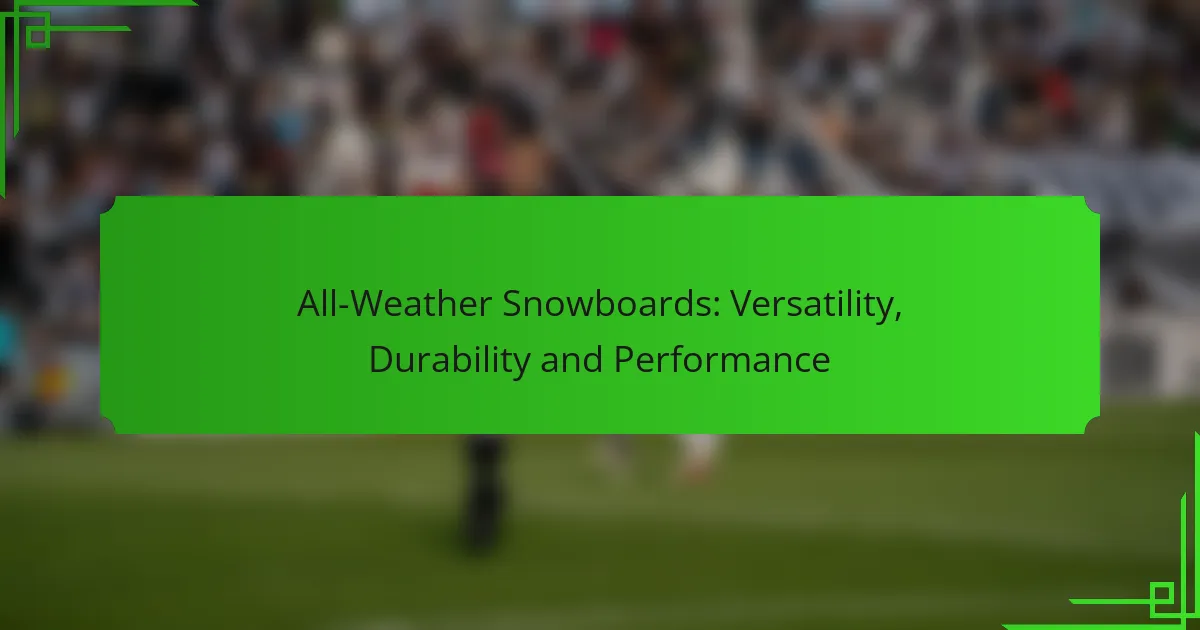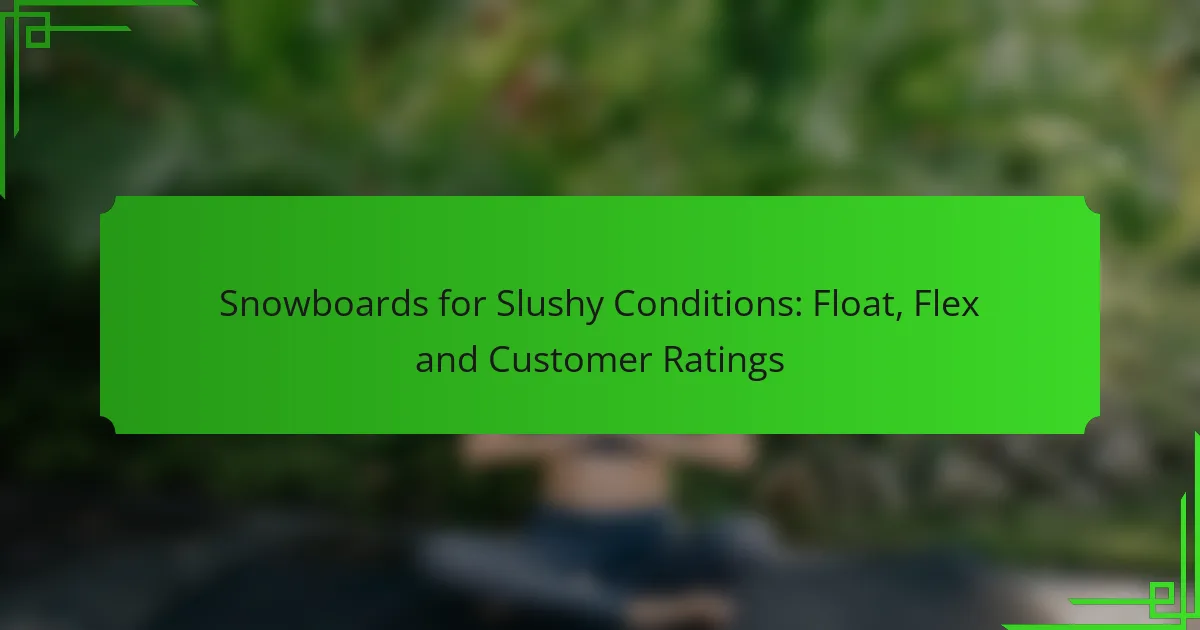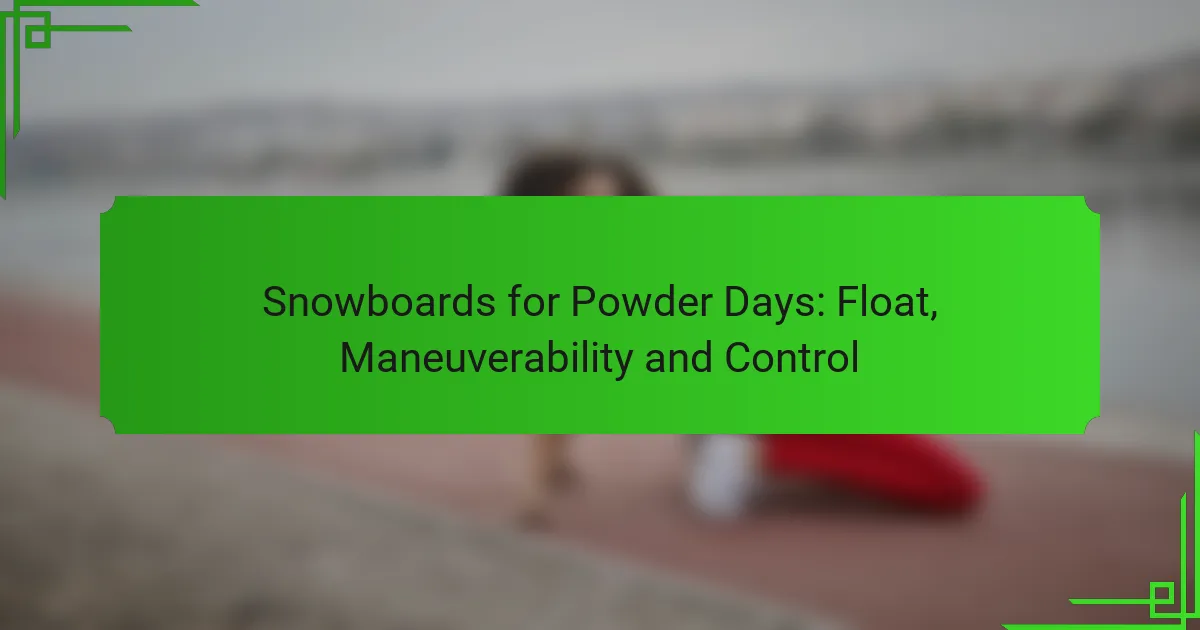What Are the Best Snowboards for Powder Conditions?
The best snowboards for powder conditions are designed to float on soft snow, providing stability and maneuverability. Look for features like a wider nose, tapered tail, and rocker profile to enhance performance in deep powder.
Burton Fish
The Burton Fish is a standout choice for powder riding, known for its directional shape and unique swallowtail design. This board excels in deep snow, allowing for effortless turns and a smooth ride.
With a medium flex and a rocker profile, the Fish offers a balance of control and playfulness. Riders appreciate its ability to maintain speed while navigating through powder, making it ideal for backcountry adventures.
Lib Tech T.Rice Pro
The Lib Tech T.Rice Pro is designed by professional snowboarder Travis Rice and is built for versatility in various conditions, including powder. Its C2X hybrid profile combines camber and rocker, providing excellent float and edge control.
This board features a lightweight construction and a sintered base, which enhances speed and durability. Riders often highlight its responsiveness and stability, making it suitable for both powder and groomed runs.
Jones Hovercraft
The Jones Hovercraft is engineered specifically for powder, featuring a wide nose and a tapered tail that enhances floatation. Its directional shape allows for quick turns and agility in deep snow.
With a stiffer flex, the Hovercraft provides stability at high speeds, making it a great option for experienced riders. Its eco-friendly construction and durable materials also appeal to environmentally conscious snowboarders.
Which Snowboards Excel in Park Conditions?
Snowboards that excel in park conditions typically feature a twin-tip design, softer flex, and a durable base. These characteristics enhance maneuverability for tricks and jumps, making them ideal for freestyle riding.
Capita DOA
The Capita DOA (Defenders of Awesome) is renowned for its versatility and performance in park settings. Its hybrid camber profile combines the pop of traditional camber with the forgiveness of rocker, allowing riders to easily initiate tricks and land jumps.
With a medium flex, the DOA provides a balance between stability and playfulness, making it suitable for both beginners and advanced riders. Its durable construction ensures it withstands the wear and tear of park features.
GNU Head Space
The GNU Head Space is designed specifically for freestyle enthusiasts, featuring a unique asymmetrical shape that enhances control and balance during tricks. Its soft flex allows for easy manipulation, making it a favorite among park riders.
This board incorporates a C2X camber profile, which offers a blend of rocker and camber for optimal edge hold and float in various conditions. Riders appreciate its responsiveness and the ability to tackle both jumps and rails with confidence.
Ride Warpig
The Ride Warpig stands out with its short, wide design, making it incredibly agile for park riding. This board is known for its playful nature, allowing riders to easily spin and maneuver around features.
Its directional twin shape and hybrid rocker profile provide a unique combination of stability and fun, making it ideal for both park and all-mountain use. Riders looking for a board that excels in park conditions while remaining versatile will find the Warpig a solid choice.
How to Choose a Snowboard for All-Mountain Conditions?
Choosing a snowboard for all-mountain conditions involves selecting a versatile board that performs well across various terrains. Look for a balance of flexibility, shape, and size to ensure optimal performance on both groomed runs and off-piste areas.
Flexibility and Shape Considerations
Flexibility is crucial for an all-mountain snowboard, as it affects control and stability. A medium flex is often ideal, providing enough stiffness for speed while allowing for maneuverability in varied conditions. The shape should be directional or twin-tip, enabling good performance whether riding forward or switch.
Consider the board’s width as well; a wider board can offer better floatation in powder, while a narrower board may enhance edge control on hardpack. Pay attention to your boot size when selecting width to avoid toe drag.
Recommended Models
Some popular all-mountain snowboard models include the Burton Custom, which is known for its versatility and durability, and the Lib Tech TRS, praised for its edge hold and float in powder. The Rossignol One LF is another strong contender, offering a balanced ride suitable for various skill levels.
When selecting a model, consider your riding style and preferences. For example, if you prioritize freestyle elements, look for boards with a softer flex and twin-tip shape. If you prefer carving and speed, opt for stiffer boards with a directional shape.
What Are the Top Snowboards for Freestyle Riding?
The best snowboards for freestyle riding are designed for tricks, jumps, and park features. They typically feature a twin-tip shape, softer flex, and enhanced maneuverability to facilitate spins and flips.
Salomon Villain
The Salomon Villain is a popular choice among freestyle riders due to its versatile design and responsive feel. With a medium flex and a true twin shape, it allows for easy switch riding and stability during landings.
This board features a Rock Out Camber profile, which combines camber underfoot with rocker at the tips, providing a balance of pop and playfulness. Riders appreciate its durability and ability to handle various park features, making it suitable for both beginners and seasoned pros.
Rome Artifact
The Rome Artifact is another top contender for freestyle enthusiasts, known for its playful nature and lightweight construction. Its soft flex makes it ideal for jibbing and pressing, allowing riders to easily manipulate the board for tricks.
Equipped with a true twin shape and a hybrid camber profile, the Artifact offers a blend of stability and flexibility. This board excels in the park but can also handle all-mountain conditions, making it a versatile option for those who enjoy various terrains.
How Do Weather Conditions Affect Snowboard Performance?
Weather conditions significantly influence snowboard performance, impacting factors like grip, speed, and maneuverability. Understanding how temperature and humidity affect your ride can help you choose the right board and settings for optimal performance.
Impact of Temperature
Temperature affects the snow’s texture and hardness, which in turn influences how your snowboard interacts with the surface. Colder temperatures typically create firmer, icier conditions, requiring boards with sharper edges for better grip. Conversely, warmer temperatures lead to softer, slushier snow, which can slow you down and may benefit from a wider board for stability.
For optimal performance, consider adjusting your board’s settings based on the temperature. In colder conditions, a stiffer board can enhance responsiveness, while a softer board may be preferable in warmer weather to allow for easier turns and a more forgiving ride.
Effect of Humidity
Humidity levels can change the snow’s characteristics, affecting how it behaves under your snowboard. High humidity often leads to wetter snow, which can create a heavier, slower ride. In contrast, low humidity typically results in drier, lighter snow, allowing for faster speeds and smoother turns.
When planning your snowboarding day, check the humidity forecast. If it’s high, expect a more challenging ride and consider using a board designed for wet conditions. On low-humidity days, enjoy the speed and agility that comes with drier snow, and adjust your riding style accordingly to maximize performance.
What Should You Consider When Selecting a Snowboard?
Selecting a snowboard involves understanding your riding style, skill level, and the type of terrain you’ll be tackling. These factors will help you choose a board that enhances your performance and enjoyment on the slopes.
Riding Style
Your riding style significantly influences the snowboard you should choose. Common styles include freestyle, all-mountain, and freeride, each designed for different experiences. For instance, freestyle boards are shorter and more flexible, ideal for tricks and park riding, while freeride boards are stiffer and longer, suited for off-piste and powder conditions.
Consider how you intend to use your snowboard. If you plan to spend most of your time in the park, look for a board that offers maneuverability and pop. Conversely, if you prefer carving down groomed runs or exploring backcountry, opt for a board that provides stability and control.
Skill Level
Your skill level is crucial when selecting a snowboard, as it impacts the board’s design and features. Beginners typically benefit from softer, more forgiving boards that facilitate learning and turning. Intermediate and advanced riders may prefer stiffer boards that offer better performance at higher speeds and in varied conditions.
When assessing your skill level, think about your comfort on the slopes. If you’re still mastering basic turns, a board with a lower flex rating will help you progress. Advanced riders should look for boards that match their specific riding preferences and techniques.
Terrain Type
The type of terrain you’ll be riding on should guide your snowboard selection. Different boards excel in various conditions, such as groomed runs, powder, or park features. For example, a board designed for powder will have a wider nose and tapered tail to float on soft snow, while an all-mountain board balances performance across diverse terrains.
Evaluate the typical conditions at your local ski resort or the destinations you plan to visit. If you frequently encounter icy slopes, a board with a sharper edge will provide better grip. For those who enjoy varied terrain, an all-mountain board that performs well in multiple conditions is a practical choice.





